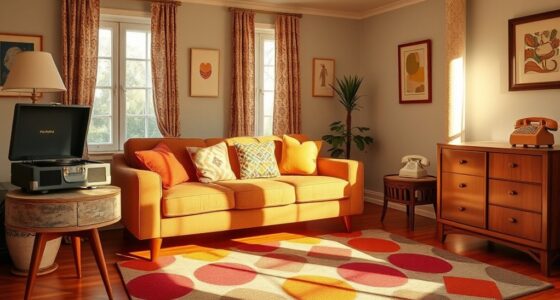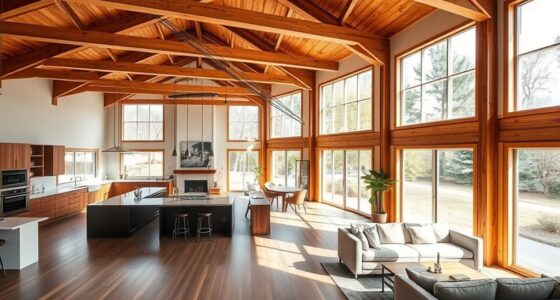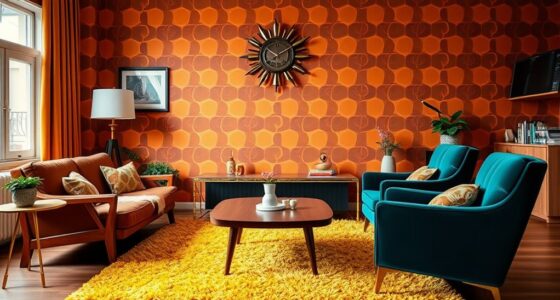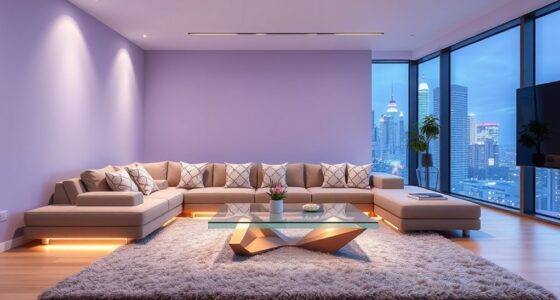Waterbeds gained fame in the 1960s and 70s thanks to their innovative design, comfort, and trendy appeal fueled by celebrity endorsements and cultural trends around wellness and futuristic lifestyles. However, practical issues like leaks, maintenance, and durability problems, along with changing consumer tastes favoring sleeker, easier-to-care-for mattresses, led to their decline. Environmental concerns and newer sleep technologies also contributed to their fall from popularity. If you’re curious about how this unique trend evolved, keep exploring to learn more.
Key Takeaways
- Waterbeds gained popularity in the 1960s and 1970s due to their innovative design, comfort, and association with wellness trends.
- Practical issues like leaks, maintenance, and heavy weight led to durability concerns, diminishing their appeal.
- Consumer preferences shifted to modern mattresses and sleep technology, reducing demand for traditional waterbeds.
- Environmental concerns over plastics, water waste, and energy use contributed to their decline.
- Today, waterbeds are seen as nostalgic icons with skepticism about their longevity and ecological impact.
The Innovative Beginnings of Waterbeds
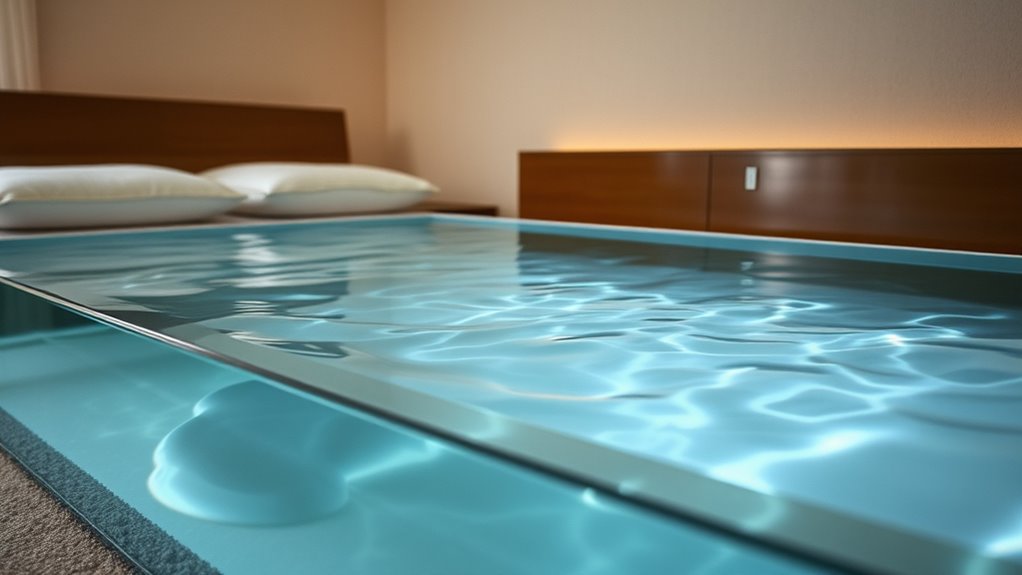
Waterbeds first appeared in the 1960s as a radical new idea that challenged traditional furniture design. You’re likely drawn to their unique waterbed design, which offers a different kind of comfort and aesthetic. The early innovators experimented with various waterbed materials, including vinyl and other flexible plastics, to create a durable yet responsive surface. This innovative approach allowed the waterbed to mold to your body, providing support and a soothing sensation unlike conventional mattresses. The design process focused on balancing water’s flexibility with the need for structural stability. As a result, waterbeds became not just furniture but a lifestyle statement. Their creation marked a bold departure from traditional beds, capturing imaginations with their futuristic appeal and promising a new level of comfort. Additionally, the development of waterbeds involved understanding material durability, which was crucial to ensure longevity and safety of the product.
Marketing and Cultural Trends That Boosted Popularity

During the 1970s, the wellness craze made waterbeds a must-have for relaxation and health. Celebrity endorsements also played a big role, making the beds trendy and desirable. These marketing and cultural trends helped propel waterbeds into mainstream popularity. Additionally, the novelty of product innovations contributed to their widespread appeal during that era.
1970s Wellness Craze
The 1980s saw a surge in wellness trends fueled by bold marketing campaigns and a cultural obsession with self-improvement. Waterbeds gained popularity by promising hydrotherapy benefits, claiming they eased back pain and reduced stress through gentle, soothing motion. Advertisers emphasized their health perks, appealing to a health-conscious audience enthusiastic for relaxation and recovery. However, concerns about waterbed safety persisted, with critics warning about leaks, mold, and fire hazards. Despite these risks, the allure of a futuristic, luxurious sleep environment drove sales. The trend was driven by a desire for comfort and wellness, reinforced by marketing that linked waterbeds to a healthier lifestyle. Ultimately, the combination of wellness promises and innovative advertising pushed waterbeds into mainstream consciousness during this era.
Celebrity Endorsements Boost Fame
Celebrity endorsements played a key role in elevating waterbeds from a niche novelty to a household staple. Celebrity influence made these beds seem glamorous and desirable, convincing the public that they were a must-have item. Endorsement strategies, like featuring popular actors or musicians using waterbeds in ads or movies, amplified their appeal. When celebrities showcased waterbeds as symbols of luxury and relaxation, you felt more inclined to try them yourself. These endorsements created buzz, making waterbeds trendy and fashionable. As a result, sales surged during their peak popularity. Without celebrity influence, the waterbed’s rise might have been much slower. Their endorsement strategies effectively harnessed fame to boost the product’s status, turning waterbeds into a cultural phenomenon for a time. Additionally, the influence of media and pop culture trends further propelled their popularity during that era.
Practical Concerns and Challenges With Waterbeds
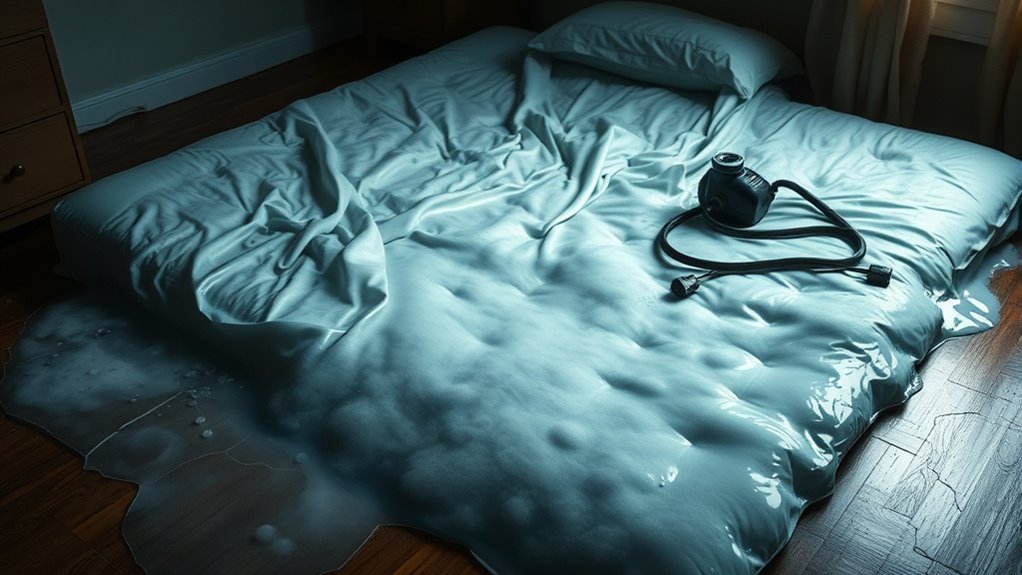
While waterbeds may seem like a comfortable and innovative choice, they come with a range of practical concerns that can make ownership challenging. Durability issues are common; the vinyl material can weaken over time, leading to leaks or tears that require repairs or replacement. These beds also demand ongoing maintenance, including regular water refilling, balancing the water level, and adding conditioners to prevent mold or bacteria growth. Punctures or leaks can be difficult to detect early, risking extensive water damage to your flooring and furniture. Additionally, waterbeds are heavy and require a sturdy frame and strong support, which can be costly. Overall, the maintenance difficulties and durability concerns often outweigh the comfort benefits, making waterbeds less practical for everyday use.
The Shift in Consumer Preferences and Lifestyle Changes
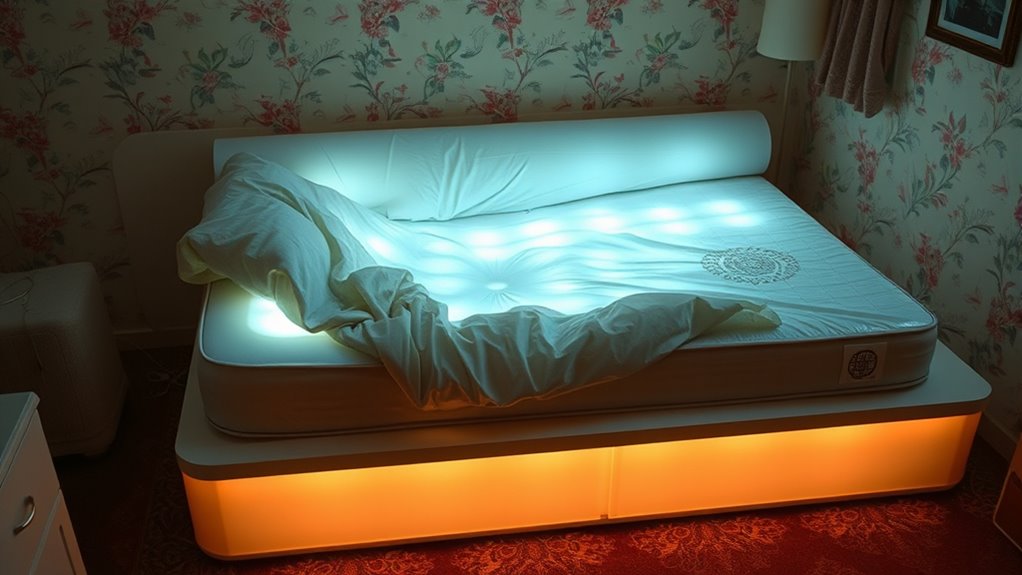
As consumer preferences shifted away from the novelty of waterbeds, lifestyles also evolved to prioritize convenience, practicality, and health. You now seek sleep comfort that’s reliable and easy to maintain. Bedroom aesthetics became more important, leading to sleeker, more minimalist designs. Waterbeds, once trendy, fell out of favor because they didn’t align with these new priorities. Consider these changes:
- Modern mattresses offer better support and comfort, replacing the unique feel of waterbeds.
- Simpler bedroom designs focus on clean lines and functionality, making waterbeds seem outdated.
- Health-conscious consumers prefer materials that promote better sleep hygiene, which waterbeds lacked.
These shifts reflect a broader move toward practical, stylish choices that improve sleep quality and bedroom appeal.
The Decline of Waterbeds in the Market
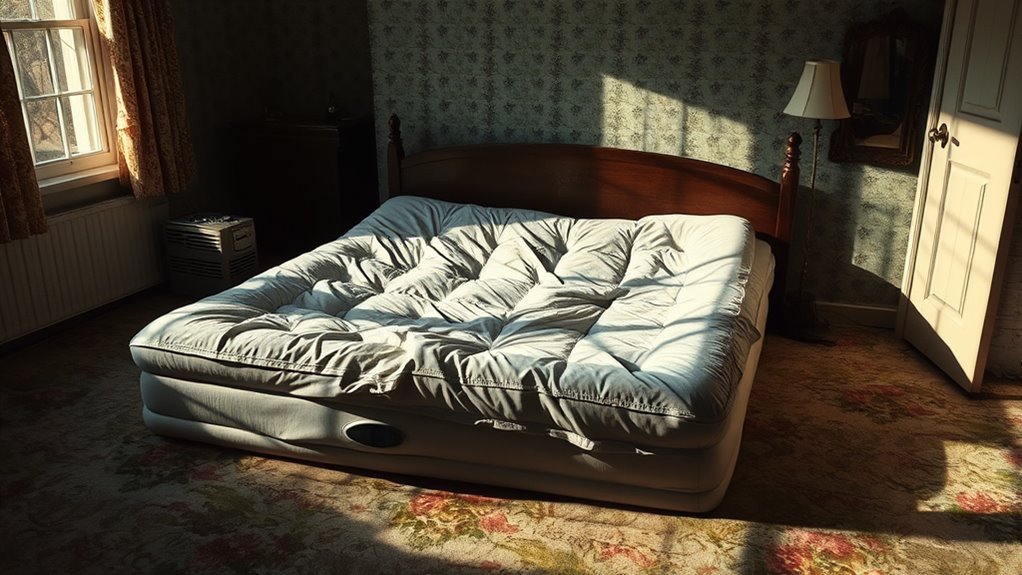
You might notice that waterbeds became less popular as manufacturing costs increased and new alternatives gained attention. Consumers started shifting their preferences toward more practical and affordable options. This change in perception ultimately led to the decline of waterbeds in the market. Additionally, the emergence of innovative sleep products offered consumers more comfort and convenience, further reducing demand for traditional waterbeds.
Rising Manufacturing Costs
Rising manufacturing costs substantially contributed to the decline of waterbeds in the market. As expenses increased, companies struggled with cost management, making it harder to keep prices competitive. Several factors drove these costs up:
- Higher raw material prices, especially for vinyl and specialty foams.
- Disruptions in the supply chain, causing delays and increased shipping fees.
- Rising labor costs, especially in regions where production was traditionally located.
These issues forced manufacturers to either raise prices or cut quality, both of which hurt sales. The increased production costs made waterbeds less appealing to consumers and less profitable for producers. Additionally, market trends shifted consumer preferences away from waterbeds toward more modern sleep solutions. Ultimately, the economic pressure accelerated the decline of waterbeds, pushing many companies out of the market.
Emergence of Alternatives
The increasing costs of manufacturing made waterbeds less competitive, prompting consumers and manufacturers to seek alternatives. As a result, the market saw a rise in alternative sleep options, such as memory foam mattresses and adjustable beds. These sleeping innovations offered more convenience, durability, and easier maintenance, making them attractive choices for consumers. The appeal of a more practical and cost-effective sleep solution led many to shift away from traditional waterbeds. Manufacturers responded by developing new products that emphasized comfort and customization, further diminishing waterbeds’ market share. This emergence of alternatives changed the landscape of sleep products, making waterbeds seem outdated in comparison. Additionally, the market demand for diverse sleep solutions grew as consumers prioritized health benefits and personalized comfort, contributing further to the decline of waterbeds. Ultimately, these innovations played a significant role in the decline of waterbeds in the marketplace.
Market Perception Shift
As consumer preferences shifted toward more practical and modern sleep solutions, waterbeds began to be viewed as outdated. The perceived durability of waterbeds declined because leaks and maintenance issues became common concerns. People also started questioning their aesthetic appeal, seeing them as bulky and less stylish compared to sleek modern mattresses. This shift in perception led to a few key changes: 1. Many consumers doubted waterbeds’ long-term reliability. 2. Aesthetic appeal waned as waterbeds lost their trendy, innovative image. 3. Overall market confidence dropped, reducing demand considerably. Additionally, the availability of alternative sleep systems with better sound recording techniques further diminished waterbeds’ appeal. As a result, waterbeds were no longer seen as a practical or attractive option, accelerating their decline in the marketplace. This perception shift played a vital role in the waterbed’s fall from popularity.
The Legacy and Modern Perceptions of Waterbeds
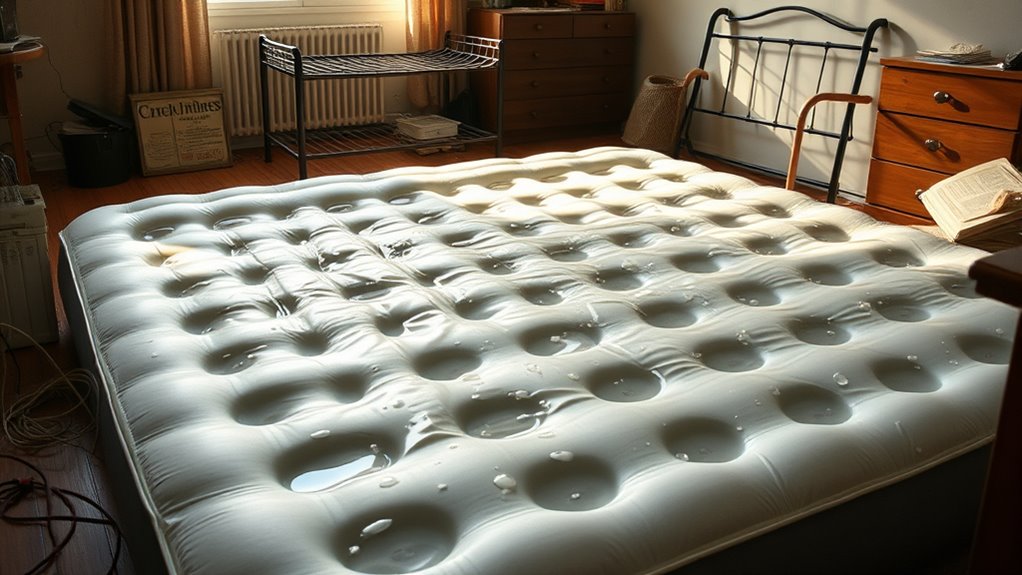
While waterbeds once symbolized innovation and luxury in the bedroom, their legacy is now a mix of nostalgia and skepticism. Today, many question their waterbed sustainability and environmental impact. Waterbeds used a significant amount of plastic and synthetic materials, raising concerns about ecological footprint. Repairs and refills often involved water waste, and the heating systems consumed considerable energy. As environmental awareness grew, these concerns tarnished their reputation. Modern perceptions tend to see waterbeds as outdated or impractical, but some still appreciate their unique comfort and aesthetic appeal. Additionally, nursing a waterbed can be challenging due to potential leaks and the need for regular maintenance. Overall, their legacy serves as a reminder of innovation’s fleeting nature and the importance of considering sustainability in product design. Waterbeds remain a symbol of a bygone era, viewed through both fondness and critique.
Frequently Asked Questions
Are Waterbeds Still Available for Purchase Today?
Yes, you can still find current waterbed models today. Though less popular, some waterbed retailers continue to offer new options, often focusing on specialty or custom designs. You might need to search online or visit specific stores that cater to niche markets. Keep in mind, availability varies, and you may encounter limited choices. However, if you’re interested, there are still places where you can purchase a waterbed.
Did Waterbeds Influence Modern Mattress Technology?
Imagine a gentle wave cradling you as you lie down—waterbeds sparked quiet waterbed innovation that influenced modern mattress technology. You can see how their fluid-like support pushed designers to explore new materials and designs, leading to innovations like memory foam and adjustable beds. These advances, inspired by waterbeds, shape your current sleep experience, blending comfort and support. Waterbeds’ legacy continues to ripple through the evolution of mattress technology today.
What Safety Issues Are Associated With Waterbeds?
You should be aware that waterbeds pose safety issues like water leakage, which can cause flooding and damage your floor. Additionally, if not maintained properly, they can lead to mold growth inside the mattress, creating health risks. To stay safe, regularly check for leaks and keep the bedding dry, ensuring proper ventilation. Proper maintenance minimizes these hazards, making waterbeds safer for use.
How Much Did Waterbeds Typically Cost at Their Peak?
Imagine slipping into a floating oasis; at their peak, waterbed prices ranged from $1,000 to $2,000, making them a luxurious choice. You’d find mattress costs climbing with size and features, often costing more than traditional beds. During the 1970s and 80s, these beds offered a unique experience, but their high prices meant only a few could afford such comfort, fueling their popularity and eventual decline.
Are There Any Health Benefits Linked to Sleeping on Waterbeds?
You might wonder if waterbeds offer health benefits. Waterbed therapy can promote better spinal alignment by evenly distributing your body weight, reducing pressure points. Sleeping on a waterbed may ease back pain and improve posture, especially for those with chronic discomfort. While some people find waterbeds beneficial for relaxation and spinal health, it’s crucial to take into account individual needs and consult with a healthcare professional for personalized advice.
Conclusion
As you imagine the gentle ripple of waterbeds fading into memory, it’s clear how trends flow like waves—rising, crashing, and receding. Once a symbol of innovation and leisure, they now drift into nostalgia, their calm surface disturbed by practical concerns and changing lifestyles. Yet, their legacy remains, whispering tales of a time when comfort was measured in fluid motion and daring design. Waterbeds may be gone, but their ripple continues to influence our dreams.


